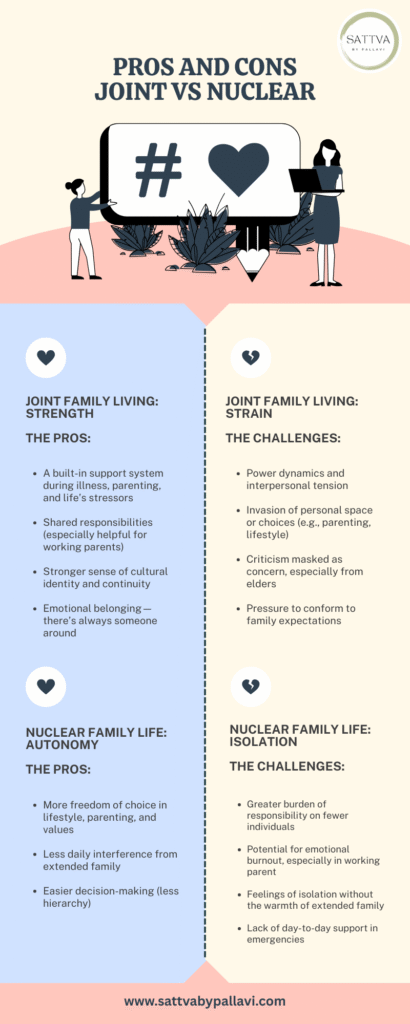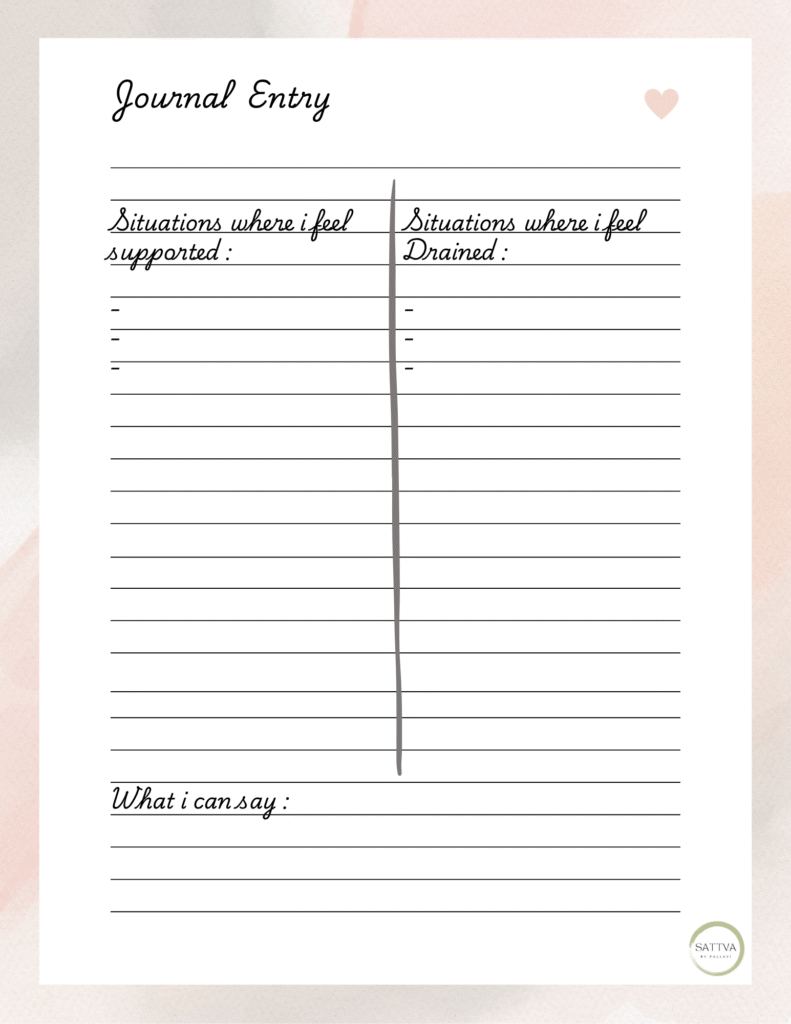The Modern Indian Family: Navigating New Norms The structure of the Indian Family has undergone a quiet revolution. Once centred around large joint families, many urban households today operate as nuclear units. Both bring with them unique advantages—and emotional challenges. But this shift is not just logistical. It’s deeply psychological, cultural, and generational. And like …
The Modern Indian Family: Navigating New Norms
The structure of the Indian Family has undergone a quiet revolution. Once centred around large joint families, many urban households today operate as nuclear units. Both bring with them unique advantages—and emotional challenges.
But this shift is not just logistical. It’s deeply psychological, cultural, and generational. And like all transitions, it requires intentional reflection and emotional tools to navigate.

The Gendered Impact: How It Affects Individuals Differently

While joint and nuclear family structures affect everyone, the emotional and practical impact can differ based on gender—especially within Indian households.
In joint families, women—particularly daughters-in-law—often face the unspoken burden of upholding tradition, managing domestic duties, and silently absorbing emotional strain to “keep the peace.” Autonomy and self-expression may take a backseat. Men, on the other hand, may feel caught between family loyalty and their partner’s emotional well-being, leading to internal conflict and emotional disengagement.
In nuclear settings, women might find more freedom, but also greater loneliness—especially if they’re primary caregivers without a wider support system. Men may carry the pressure of being the sole emotional and financial anchor, often without the tools or space to talk about it.
Both setups reveal a truth: emotional labor often goes unspoken and unequally distributed. Recognizing this is the first step to creating healthier, more supportive family ecosystems.
What Helps? Emotional Tools to Cope
There’s no one-size-fits-all approach. Whether you’re in a joint or nuclear setup, emotional well-being depends on skills, boundaries, and honest communication.
1. Setting Boundaries in Joint Families
In Indian joint families, where elders often feel entitled to “advise,” it becomes crucial to assert boundaries with cultural sensitivity.
Examples:
- “I really appreciate your input, but we’d like to try handling this our way first.”
- “Could we please discuss this later? Right now, I need some quiet time.”
Practice Tip:
Use the “respect + redirect” formula — Acknowledge their concern, then gently assert your need.
2. Communication in Nuclear Families
While nuclear families offer privacy, they often lack the built-in support system. Proactive communication with extended family is key to maintaining healthy relationships without guilt.
Suggestions:
- Plan extended family visits in advance
- Be clear about boundaries around unsolicited parenting advice
- Ask for help when needed, but define limits
Remember: There’s No “Correct” Family Setup
The real question isn’t whether joint or nuclear is better — it’s about which system works for your emotional needs, values, and lifestyle.
Whether you’re managing:
- A new marriage within a traditional household
- Raising a child without a village
- Trying to split Diwali between in-laws and parents…
Your mental health matters in the equation.
Activity:
- Create a “Family Energy Chart” for your current living situation.
- Column A: List situations where you feel supported
- Column B: Situations that drain you
- Use this to start a gentle conversation with your family or therapist.
You can just download and print the chart attached below.

Final Thought
Whether you’re adjusting to a joint setup or carving space in a nuclear one—family life in India is evolving. And with it, so should our emotional fluency, boundary literacy, and self-awareness.
You don’t have to choose tradition or well-being. With the right tools, you can honour both.
Credits : Therapist Namrata







